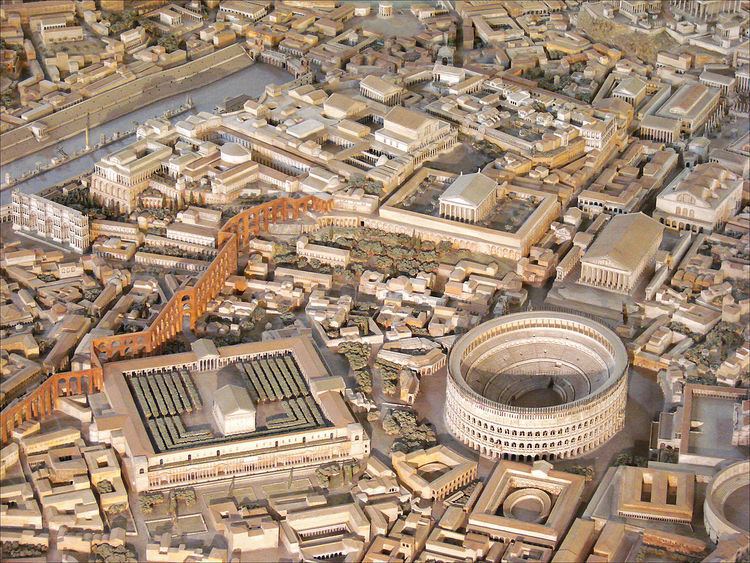 | ||
Address Via Claudia, 20, 00184 Roma, Italy Similar Celio, Basilica of Saints John and, Arch of Dolabella, Caelian Hill, Ninfeo di Nerone | ||
The Temple of Claudius, also variously known as the Temple of the Divus Claudius, the Temple of the Divine Claudius and the Temple of the Deified Claudius, covered a large area to the south of the Colosseum in Rome, Italy. Little remains visible today.
Contents
History
Construction of the Temple of Claudius on the Caelian Hill was begun by Agrippina, the fourth wife of the Emperor Claudius, on his death in 54 AD. It was subsequently damaged by the Great Fire of Rome and further destroyed by Agrippina's son, Nero, but later rebuilt by the Emperor Vespasian, who became emperor in 69 AD. The destruction by Nero was probably due to his extension of the Aqua Claudia aqueduct to the Caelian Hill but part may also have been removed to make way for the construction of his Domus Aurea. The last mention of the temple is from the fourth century and nothing is known of what happened to it after Vespasian’s reconstruction.
Location
The area occupied by the Temple is approximately bounded by the present roads of Via Claudia, Viale del Parco del Celio and the Clivus Scauri. The temple stood on a great rectangular platform (180 x 200 meters), supported by powerful retaining walls of 15 metres or more, that are still partly visible. The actual temple was constructed on a podium 20 steps above the surrounding platform. The entrance to the courtyard was from the south, through a monumental central entrance with an imposing stairway, oriented towards the Palatine Hill. The platform itself has been difficult for archaeologists to interpret but it is believed to have included equestrian statues of Claudius.
The known remains are of the four sides of the platform and nothing remains of the temple above. The western side of the platform was constructed with travertine and some remains were incorporated into the bell tower of the basilica of Santi Giovanni e Paolo. The northern side was composed of a row of vaulted rooms. During the time of Nero there were fountains and the remains of one of these, consisting of a ship's bow with a boar's head, were found and are now in the Capitoline Museums. Vespasian subsequently reduced the consumption of water, returning it to civilian use. The east side is the best preserved, and changes carried out by Nero can be noted here. The area was rediscovered when a new road, the Via Claudia, was constructed in 1880. Underneath the temple area there are tunnels through tufa that have recently been mapped by the Italian authorities.
